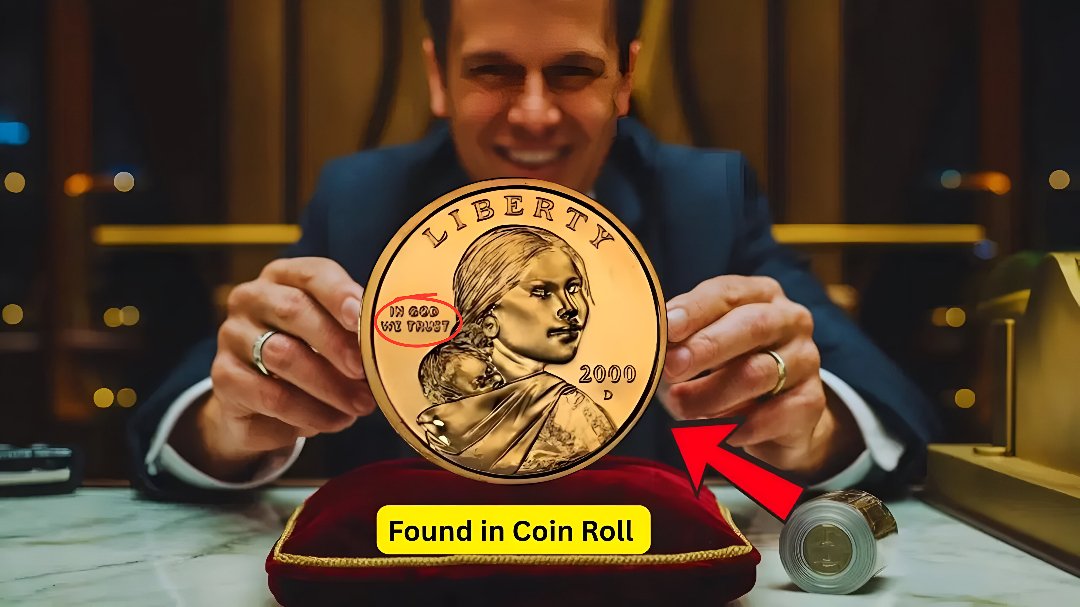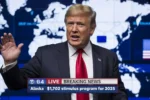Sacagawea Dollar : When the Sacagawea dollar first entered circulation in 2000, many people mistook it for a simple token because of its golden color and unfamiliar design. It often ended up in drawers, vending machines, or was dismissed as a novelty. Yet among these seemingly ordinary coins was one rare version that would later astonish collectors with a valuation of $1.2 million.
The Purpose Behind the Sacagawea Dollar
The U.S. Mint introduced the Sacagawea dollar to replace the unpopular Susan B. Anthony dollar. Designed to honor Sacagawea, the Shoshone woman who played a vital role in the Lewis and Clark expedition, the coin featured her carrying her infant son, Jean Baptiste. It was meant to stand out in appearance and significance. While millions of coins were struck, only a handful would carry the special features that made them priceless.
The Minting Mistake That Changed Everything
The incredible value of the $1.2 million Sacagawea dollar comes from a rare minting error. During production, a small number of coins were accidentally struck on planchets — blank metal discs — intended for state quarters being produced at the same time. This mistake gave the coins unusual weight and composition, making them distinctly different from ordinary Sacagawea dollars. At first, they were brushed off as tokens or odd coins, but once identified by numismatic experts, their true rarity and value were revealed.
From Loose Change to Million-Dollar Treasure
At first discovery, these unusual coins did not attract much attention. Many people simply used them as regular dollars, not realizing their worth. However, collectors quickly understood the significance of this minting error. Today, these coins are considered some of the rarest modern U.S. currency pieces, and one was officially valued at an incredible $1.2 million.
Why This Story Captures Attention
The Sacagawea dollar’s journey from an overlooked piece of change to a multimillion-dollar collectible is a reminder of the surprises that can hide in everyday life. It represents both history and fortune — a tribute to Sacagawea’s legacy and a symbol of how small errors in minting can create extraordinary treasures. For collectors and the general public, it reinforces the idea that even the most ordinary objects can carry unimaginable value.
Frequently Asked Questions (The $1.2 Million Sacagawea Dollar)
Q1: How do I know if my Sacagawea dollar is valuable?
Check for unusual weight, different composition, or minting errors. Rare versions struck on the wrong metal planchets are the ones that can be worth thousands — even millions.
Q2: Are all Sacagawea dollars rare?
No. Most Sacagawea dollars are worth only face value. Only a very limited number of error coins or proof issues hold significant collector value.
Q3: What years were Sacagawea dollars made?
The first Sacagawea dollars were minted in 2000 and continued for several years. Later, they became part of the Native American $1 Coin Program, featuring new reverse designs each year.
Q4: Where should I check for mint marks?
On Sacagawea dollars, the mint mark is located on the obverse (front) of the coin, near the date. It may read “P” for Philadelphia, “D” for Denver, or “S” for San Francisco.
Q5: What should I do if I think I have a rare Sacagawea dollar?
Take it to a professional coin dealer or send it to a grading service like PCGS or NGC. They can confirm authenticity and give you an accurate market value.
Final Thought
The $1.2 million Sacagawea dollar is more than just a rare coin — it’s a reminder that history, mistakes, and value often come together in the most unexpected ways. What many dismissed as a token turned out to be a fortune, proving that even ordinary change can hold extraordinary secrets. For collectors, it represents a dream discovery, and for the rest of us, it’s an encouragement to look a little closer at the coins we handle every day — because you never know when a simple dollar could change your life.




